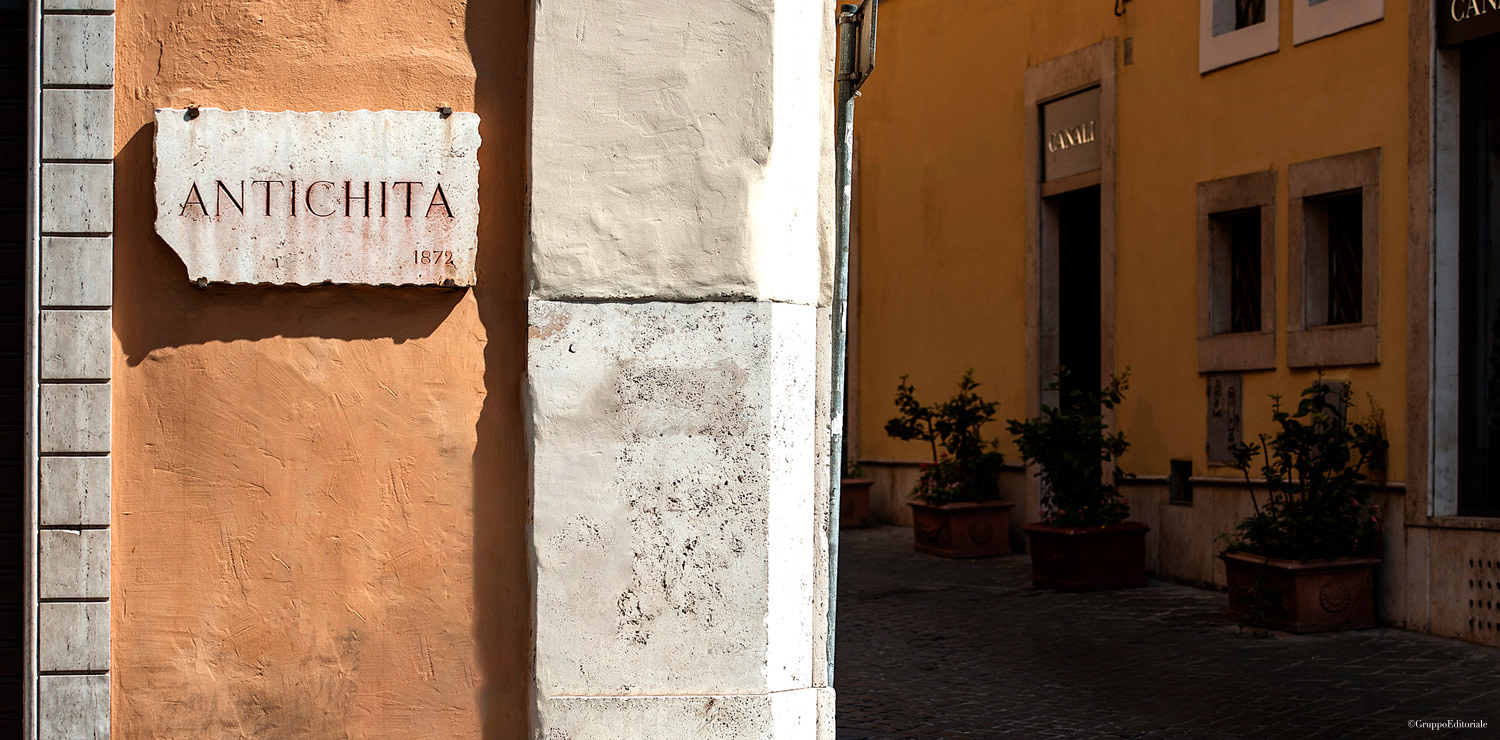The district of heritage
Art and history are waiting to be discovered in furniture, paintings and rare objects
Thanks to its rich history, our city has an infinite number of antique shops scattered throughout its streets and which sell collectibles, antique furniture and rare artisan pieces sought after for their age, their rarity and their beauty. The most important shops are located either around Piazza di Spagna or behind Piazza Navona.
One of the most prestigious names for real antiquities is the Alberto Di Castro gallery in Piazza di Spagna, which has been in business since 1878 and specializes in coloured marble from the end of the 1500s. Alberto Di Castro is the fourth generation to work at the gallery, which, thanks to its quality and rigid selection process, as well as its focus on the international market, remains a point of reference globally.
When it comes to old paintings, Megna Gallery on via del Babuino is the name on everyone’s lips, with Roman and Italian art from the 1500s to the 1800s. Owner Fabio Massimo Megna is constantly researching new acquisitions, and his passion for ancient art is particularly focused on portraits, vedute, landscapes and still lifes.
Still on the subjects of paintings, visit the Paolo Antonacci Antichità on via del Babuino, an antique shop passionate about the artists and paintings from the second half of the 18th century to the beginning of the 20th century that portray Rome, its countryside and Italian Vedutismo in general, as well as the artists of the Symbolist era, marble sculptures and paper artwork from the 19th century.
One of the most famous places for buying and seeing antiques in Rome is via dei Coronari, behind Piazza Navona towards Ponte dell’Angelo. Here we find Verdini, a historic shop in Piazza Zanardelli that sells antique furniture, tables, chairs, writing desks and chests of drawers, as well as statues, chandeliers and collectables. A little further down, we find the Galleria dei Coronari, opened more than 30 years ago in Borgo Pio and later moved here and renamed in honour of a road that was known for its many antique dealers.
Via dei Coronari, the shortest way to reach San Pietro, owes its name to the sacred object vendors who settled here to sell their merchandise to the many pilgrims who passed through San Pietro. It is considered one of the most beautiful streets in Rome, intertwining history and art, with alleys that date back to the Middle Ages interspersed with Renaissance and Baroque palazzos, numerous sacred images visible on their facades and plenty of beautiful antique shops to admire.
In the heart of old Rome, between the Pantheon and piazza Navona, is the historic Fratelli Tanca. The various members of the Tanca family, now in its fourth generation, specialize in artworks and collectibles, continuing a tradition that has been going strong for more than 70 years. In their artisan laboratory, various restoration activities are carried out with care on every kind of object and material: porcelain, paintings, ceramics, welding, silvering, lacquering, cleaning and fixing old jewels, threading necklaces and pearls, etc. Inside the fascinating Magazzini Ruffi at viale Ardeatino, 7, a stone’s throw from the Piramide, you can find less arduous items, along with antiques and a restoration service for antique furniture. The linear furniture and light blond walnut, oak, cherry and maple wood are combined with softer wooden furniture made from fir and pine, all of which have their own style that ranges from Biedermeier to Louis Seize, Empire, Liberty and Déco.
An unmissable name for antique lovers that’s a little out of the way, but absolutely worth a visit, if only to admire an incredibly vast exhibition space that stretches over 25,000 square metres, is Antichità Fiorillo in Viterbo. Located on the Cassia, 75km from Rome, Fiorillo has been operating in the national and international antique sector for more than 50 years, researching and selecting period objects. Here you can find a vast assortment of objects in stone and marble: fireplaces, portals, fountains, columns and any other period piece for both interior furnishing and gardens and terraces.
You can also buy antique cladding materials, terracotta flooring, decorated maiolica from various places like Vietri and Caltagirone and a vast selection of furniture recovered during the demolition of houses and villas. A trip to Viterbo is a must for antiques lovers and anyone redecorating their home. In addition to these historic shops in Rome, there is also the Porta Portese market, which is held every Sunday morning. Among the stalls of clothes, objects of all kinds, shoes and various odds and ends, is a beautiful section dedicated to antiques where you can find some nice and valuable pieces, especially dining tables, chairs, writing desks and chests of drawers. The most common woods used are mahogany, oak, pine, walnut and rosewood, but there are also more modern furniture made of laminate or veneer that provide the same effect for less, so beware of anyone looking to rip you off. There are also a number of auction houses that sell a range of objects, divided into sections including ancient and modern silver, jewels, furniture, art and ancient paintings. Among the most important Roman auction houses is Colasanti Casa d’Aste, which has its display room on via Margutta or via Aurelia and which sells niche antiques, often evaluating and selecting entire private collections.









